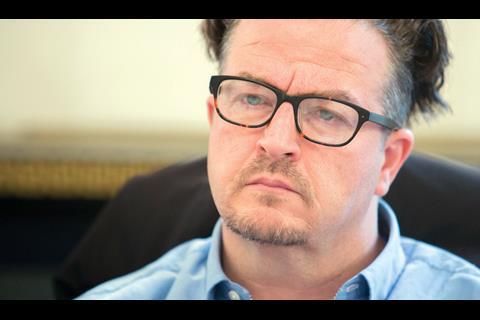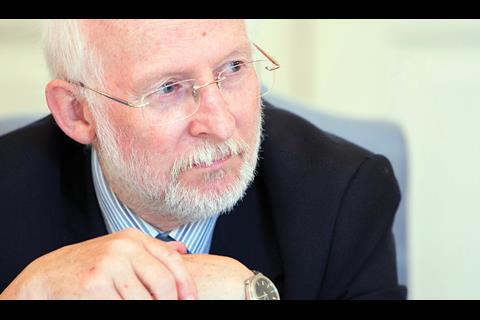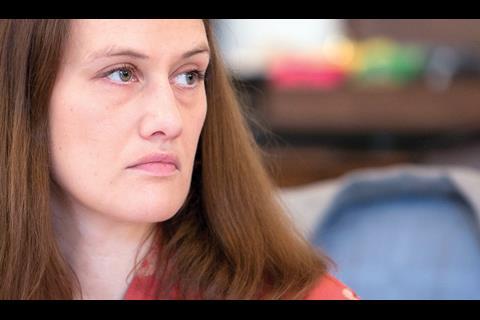Self-care and self-management are often heralded as liberators of patients and obvious ways to slash NHS costs but significant barriers remain to widespread implementation, the expert panel of HSJ’s latest roundtable heard. Alison Moore listened in
Roundtable participants
Peter Birtles, patient and lay member of National Institute for Clinical Excellence and health diagnostics committee
Howard Catton, head of policy and international, Royal College of Nursing
Dr John Chisholm, member of the Self-Care Forum board and chair of the Men’s Health Forum
Neil Churchill, director of patient experience, NHS England
Dr Andy Hughes, consultant community haematologist, Essex
Candace Imison, acting director of policy, the King’s Fund
Alastair McLellan, HSJ editor (roundtable chair)
Don Redding, policy director, National Voices
Susan Summers, head of long-term conditions, NHS England
Elizabeth Wade, head of policy, NHS Confederation
Barely an NHS document is published without a reference to the role that self-care and self-management will have in the future. But what this amounts to, what barriers there are to more self-care and how it can be enabled at scale are questions which are often not addressed.
An HSJ roundtable, sponsored by Roche Diagnostics, drew together patients, healthcare professionals and those involved in policy to look at this − and identify factors which could drive forward change.
‘We are talking about giving patients and the public increased confidence, better resilience, increased empowerment and control’
Roundtable chair and HSJ editor Alastair McLellan stressed that the panel needed to deal with healthcare as it is rather than as they would like it to be. “If you could imagine around the table with us were a series of frontline practitioners, would they think we were just talking rubbish - would we be in a fantasy land?” he said.
And he warned that timescales had to be short. “We should focus… on what can be changed in the next couple of years,” he said. It was important to offer healthcare leaders something they could use in their practice and in their management, he added.
“There is a particular danger that self-care is a subject that can give itself over to apple pie and motherhood. It is very easy to ignore the limitations of self-care and the cultural difficulties around introducing it and the various resistances from all groups, including patients, to it,” he warned.
But first it was necessary to look at why self-care was important in the NHS over the next couple of years, he said, inviting the panellists to give their views.
Degree of risk
There was immediate support for self-care from Neil Churchill, director of patient experience at NHS England, who stressed that patients had to be allowed to make their own decisions.
“Patients are generally in the best position to know what good looks like. They know what they want to achieve, they make individual trade-offs… They have different opinions about the degree of risk. To deliver personalised healthcare we have to put patients in control.”
And Dr John Chisholm, who is on the board of the Self-Care Forum, added: “We are talking about giving patients and the public increased confidence, better resilience, increased empowerment and control.
“And the opportunity to engage in shared decision making and co-partnership with the people who are providing their care.
“For the NHS it should lead to more appropriate use of healthcare, better management of demand and improved outcomes.”
He related this to the “fully engaged” scenario outlined by Derek Wanless in 2004, which looked to people taking responsibility for their own health, leading to better use of NHS resources. “Self-care has to be part of that,” he said.
But he warned that cultural change both at the level of the service and in individual consultations would take time: “A drive in that direction needs to be incremental and not happen overnight.”
But are the arguments around self-care − broadly patients looking after their own health − different from those around self-management, where patients take an active role in managing an existing condition?
‘Self-care offers the start of a new relationship between a patient and the professionals who are providing the care and support’
Don Redding, director of policy at National Voices, argued the two overlapped although they were often seen as distinct ideas. “I am wary that they can be separated and I am wary about what happens to the discussion about self-care if we take it out of the context of self-management,” he said.
And he pointed out that people with long-term conditions looked after themselves all the time − they spent 8,000 hours a year managing themselves. Self-care was important because it helped them do better in managing a condition they had to live with.
“There is a reasonable evidence base that we can show better health outcomes if we can improve patients’ experience and knowledge,” he added. But issues around cost and value were nuanced.
Royal College of Nursing head of policy and international Howard Catton linked self-care to the future sustainability of the NHS − a service based on a model which he argued could not continue as it was. But self-care could also drive changes in the way healthcare was delivered, moving away from traditional models.
“It can drive changes in the way professionals and teams work and could help with the shift from a medical/non-medical bias to true multidisciplinary team working,” he said.
Candace Imison, acting director of policy at the King’s Fund, pointed to the benefits of self-care, such as its ability to empower people and improve their mental health when they had long-term conditions - a side of self-care which she suggested was often forgotten.
And there are large benefits for the NHS. David Sobel’s work for Kaiser Permanente had shown that a 5 per cent shift in the propensity to self-care results in a 25 per cent reduction in the propensity to seek professional help, she added. At a time when the NHS was heading towards “the biggest financial stress that we have ever had” this could be important.
Susan Summers, head of long-term conditions at NHS England, said: “Self-care offers the start of a new relationship between a patient and the professionals who are providing the care and support.”
The patient in context
Factors in self-care could range from educational input to technological ones - such as telehealth - but also social support through groups of patients with a common condition sharing experiences. There was plenty of work which demonstrated the value that could be put on self-care, but there was also a link with public health and services such as smoking cessation.
“What we have not really tapped into is the mind shift between the style of consultation that the professional has with the patient,” said Ms Summers.
Peter Birtles − a patient who has self-monitored anticoagulation medication for many years − had a nuanced view. He pointed out that a disproportionate number of patients with such conditions are elderly and with that increasing age comes questions about competency to self-care.
But he said it was important to think about the patient in the context of family, carers and others around them.
“One of the big benefits we see is that with the act of taking over self-care has come a taking of ownership of their condition. That knowledge and ownership leads into other areas of self-care.”
NHS Confederation head of policy Elizabeth Wade said that self-care could not fail to be important as it was the reality for patients, but that its importance extended to the NHS and practitioners as well.
‘We have been poor at lifelong education and in particular we have been poor at health education in schools about lifestyle’
Self-management does not simply help patients manage long-term conditions, she added. The tools and techniques it employs could help support broader behaviour change, which in turn could improve overall health.
“Some of the interventions behind self-care online and peer support groups may even have knock-on effects of increasing levels of social interactions, which could itself bring benefits,” she added.
Technology was going to be important in this and thought needed to be given to what sort of technology would best help people care for themselves rather than support them in institutions.
Community haematologist Dr Andy Hughes, who has a particular interest in self-care for patients on anticoagulant medicines, described the position for such patients as being 20 or 30 years behind diabetes, where self-testing and management was well established.
Although the technology already existed for patients on these medicines to self-test, the situation was woefully behind. But why do it? He pointed to the coming epidemic of atrial fibrillation which would increase the number of patients needing anticoagulation medication and regular testing.
Because self-management could improve outcomes it had the potential to reduce the number of strokes among this group. “The studies also suggest that there is a big increase in patient satisfaction. It decreases the need to interact with health professionals. If you are 70 you don’t want to struggle to park at the local trust. If there is a big push to make more care available in the community, self-care and self-testing strikes me as being one of the very important drivers for doing this.
“As we get patients to self-care, self-manage and self-test it frees up health professionals to do other things. In a health economy where there is no more money we have to find better ways of doing things.”
But Mr McLellan asked why, given this general support for self-care and recognition of its importance, it was not happening. What were the barriers?
Legacy of paternalism
Dr Chisholm started with an admission that doctors might be part of the problem. “The first barrier has been past styles of consultation and how healthcare is used. In the past, doctors in particular have been more paternalistic and paternalism disempowered people. I think we still have a legacy of that, though consultation styles have changed greatly over the last 30 years.”
Self-care ought to be a lifelong habit rather than something people started when they developed a long-term condition. “We have been poor at lifelong education and in particular we have been poor at health education in schools about lifestyle, about making appropriate use of health services and about managing minor illnesses,” he said.
“Health literacy is not as good as it should be. We find that doctors and nurses within a practice are not giving consistent messages. The problem is replicated if pharmacists don’t give the same messages and if hospital teams don’t.”
Support for tough messages around people’s personal responsibility was also important. And he said the political rhetoric over the years had been around demand and access, but not responsibility.
But some patients would face cost barriers around self-care. These could be as simple as not being able to afford to keep a supply of over the counter medications in the house, or not being able to increase the amount of exercise they take due to the costs of using sports and leisure facilities.
‘Although we would like everyone to be engaged patients they don’t magically appear like that in the consulting room’
Mr Redding said it was possible there was a historic opportunity to change some of the barriers. The best model of care for long-term conditions was the year of care or the house of care model. He described the house of care as having walls made up of the healthcare professional offering the sort of consultation Dr Chisholm had referred to and then the engaged patient. The floor was commissioning while the roof was the system architecture that protected all of this.
But there were barriers in every part of this model. “There is the barrier of the culture of medical consultations and how that needs to change and there is the barrier on the other side that although we would like everyone to be engaged patients they don’t magically appear like that in the consulting room,” he said.
There is a chicken and egg situation, he suggested, in that those with poor health are often those who know least about what to do to change it. However, he pointed out the NHS England mandate talked of building the knowledge, skills and confidence of people.
But how quickly has the NHS moved to embrace self-care? Mr Catton pointed out that when he trained as a nurse in the 1980s, person-centred care was already integrated into training and was very much taken on board. “These are values and approaches and principles which have been there for a long time but it [self-care] is not happening. It really, really is difficult and tough stuff.
“How do we get the sort of relationship that Don was describing if we have 10, 15 or 20 minutes’ contact time?”
Sceptical staff
There were also concerns about risk as a barrier. “It is risky. You are looking over your shoulder if your organisation is always asking about risks and assurance and a professional regulator whom you are concerned may take a harsh approach.”
And patients might face barriers - they might be coping with mental health issues or family breakdown as well as a long-term condition, and they might have worries about whether they would feel isolated or overwhelmed by what they are being asked to take on.
Staff could also be sceptical: “I agree that doing things in different ways releases staff to do other things but people say if we do that it translates to a cut.”
Ms Imison welcomed the house analogy and the way it focused on not forgetting the role of all the constituent parts. Her partner had chronic asthma and she had asked him what coping with it was like and his reply was simply “hard work”. Improvements could be as simple as being able to get inhalers from the pharmacist without having to visit the GP surgery first.
And she cited her parents as examples of older people with chronic conditions who had not been helped to change sufficiently through self-care, for example her father self-tested for diabetes but that did not change his BMI.
‘It is really hard for commissioners to look at doing things in a completely transformative way’
“For me one of the hardest bits is behaviour change, both for the patient and the healthcare professional,” she added, saying the Department of Health had found that about one third of patients were “fully engaged,” one third middling and one third disengaged.
Ms Summers focused on how the evidence base for what worked in self-care had moved on: historically there had always been a lot of doubt around this but now there was much more hard evidence.
Self-care had tended to suffer from having a lot of pilots which were then not carried through and did not get renewed. “There is a lot of reinvention that goes on,” she said.
Mr Birtles said that cultural change was at the root of all of this for healthcare professionals and patients. Some patients still found security in ignorance, he said, and did not want to know because they were frightened.
He added that such change would require dramatic shifts in budget management in the NHS - and quickly. He suspected making such rapid change would be a problem. For example, if NICE were to support self-management for patients on anti-coagulants, there would need to be a large upfront investment in equipment to make it happen.
And he highlighted how self-management would need a structure around it to offer support and education - still pretty inadequate and in need of investment, he said. However, with almost everyone having access to the internet there was the opportunity to make some standardised information available online which could answer common questions or concerns.
Ms Wade said that professional assumptions could be a barrier. But there were also questions around why telecare was not taken up or why people withdrew from using it. There could be anxieties around the use of technology and for some people it would not replace a good quality service.
Some patients saw themselves as already managing their condition and viewed being offered additional equipment as a challenge to their independence rather than as a way of increasing it, she said.
She also highlighted the newness of the commissioning system as a barrier, making it difficult to look at radical changes. There might also be an expectation that change would be achieved by other means such as competition and that they could face challenge if they tried to do anything too innovative. “It is really hard for commissioners to look at doing things in a completely transformative way,” she said.
Dr Hughes highlighted a lack of awareness among patients and staff as a barrier. “Of the 800 patients who attend their anticoagulation clinics the vast majority are not aware that INR testing [international normalised ratios − a test of the time taken for blood to clot] can be done for themselves,” he said. “There is a lack of awareness among the staff who provide the service.”
There was a lack of incentive to move to self-management since many patients are used to going to a clinic and saw no reason to change. Staff, on the other hand, might regard the introduction of self-management as a hassle, and be concerned about patients misinterpreting their results.
“There is time involved in trying to set these things up. I think there is a perceived lack of time. In terms of absolutes it (the need for extra time) may not be there but people perceive that this is something new that will be time consuming.”
‘The constitution is a document which is the opportunity to bring a lot of folk together. I would like to see it given more teeth’
Finally, finance could be a barrier − for example, if patients had to buy equipment themselves or if GPs felt there was an additional cost to their prescribing budget. Dr Hughes had spoken to a CCG about self-testing and many GPs were reluctant to consider prescribing the necessary testing strips and argued that patients might use too many. And clinicians felt they could end up doing something different which they would not be paid for.
Mr Churchill highlighted the touchpoints in patients’ journeys, such as at diagnosis, where there was an opportunity to link to their goals. He asked how likely it was that the health service took advantage of these opportunities - such as through following them up.
And he wondered if we were fearful about embracing technology because we felt it might exacerbate health inequalities. This could inhibit moves towards ways of providing services which were convenient for some people but not accepted by all: for example, online health checks.
But with a wide range of barriers to implementation and take-up, how is self-care and self-management going to move forward? Mr McLellan asked the panel whether they could see opportunities to improve the situation and how they might be taken forward in the next two years.
Mr Redding highlighted the difficulties in bringing about change in such a short period but he could see some positives. There was good evidence about which interventions worked but these needed to be part of a delivery system which placed people on the right part of the spectrum, he said.
“The medical model seems to move people into its own end of the spectrum,” he said. But there were other factors which might help, such as the focus on outcomes and the growth of patient activism and peer support groups online.
He felt CCGs would be in a good position to drive change as they included the practices providing the care among their members. Often there was a desire to do things well.
More teeth
Mr Catton called for a better understanding of the metrics around self-care. Would patient satisfaction be part of this? And he pointed to the potential role for local government − as the resting place for public health services − and how this could be incentivised.
He also felt there was a link into the NHS constitution. “I think the values, the principles, the pledges… This is a document which is the opportunity to bring a lot of folk together. I would like to see it given more teeth.”
Co-location could also be important − he highlighted the co-location of health and social care teams in Northern Ireland and the importance of teamwork across all sectors. “I think we have got a lot of staff in the wrong place.”
With staff attitudes and reluctance to change being seen as barriers to more self-care, there was also a need to focus on their attitudes and behaviours. Mr Catton pointed out that staff who joined were “socialised” by what went on around them and there was also a need to “refresh” existing staff.
Ms Wade backed this point. “We need to think about people already in the system. All the tools and techniques around behaviour change − the people who are already there are generally setting standards and they influence people coming in,” she said.
Ms Imison stressed the importance of digging to find out what the local issues around self-care were, and of using resources such as pharmacists who could have a significant role to play in supporting it.
‘As long as you come up with a cunning plan you can persuade people they can’t afford not to be part of it’
Ms Summers said no one organisation had responsibility for self-care and it is about what each could contribute, either by themselves or in collaboration with others. But consistency of message would be the unifying force. While work was happening at many points, it was not penetrating down through other levels.
“We must engage and listen to patients more than we have and engage with the CCGs,” she said. NHS England might be in a better position to promote consistency because it was a single organisation, she added.
And CCGs needed to use risk assessment to understand the population and where their priorities lay. “Understanding what your population risk stratification is, what is the need and where are you haemorrhaging money? There could be some quick wins.”
Mr Birtles said that as an industrialist and businessman, it seemed to him that finance and incentives seemed to be a major issue for the health service. He pointed out there were many other organisations and companies which would have a stake in the shift of care towards patients and could be engaged in solutions.
“We should challenge some of these organisations to contribute to the training of people in self-care and support people who are on medications. There is a financial resource in industry and commerce which can be brought to bear to a great extent around this,” he said.
Ms Wade said: “There are now opportunities to look again at funding systems and produce a system where funding supports self-care.”
But Mr Redding expressed doubt about whether any model could be right if it excluded primary care.
Dr Hughes said the first thing which needed to be done was promotion of self-care. “A lot of people don’t know about it. We can promote it among our patients and say this might be a good thing for you because it has some tangible benefits.”
But it also needed to be promoted among staff as a means of freeing up their time, and to CCGs as having better outcomes and potential cost savings.
He also suggested there was a need to convince people that this was something of which they really wanted to be in the vanguard and that they would lose out from not being involved.
“As long as you come up with a cunning plan you can persuade people they can’t afford not to be part of it because it works better for them and their patients.”
The cost barrier for patients who needed to purchase equipment might be overcome through staggered payments, which is one area where companies could become involved.
‘Hundreds of thousands of patients were already helping themselves and just needed signposting and help in talking to each other’
But there was also a need to persuade GPs that the additional cost on their drug budgets would be small but this could take the pressure off their surgery − for example, through having to see fewer patients at anticoagulation clinics.
New technology could also reduce demands on staff: what about a smartphone app which allowed results of INR tests to be sent to surgeries as emails rather than having to be phoned in?
And the other way forward would be through sharing good practice − the NHS was like an archipelago, with information not following between the different islands. A relatively small number of pioneers could look at outcomes and cash savings and then roll out changes in their area.
Mr Churchill said hundreds of thousands of patients were already helping themselves and just needed signposting and help in talking to each other. Pharmacies were important − but the care offered there was often incentivised on process rather than outcomes.
Technology would also develop - he cited inhalers which would tell patients how successful they had been in taking medicines into their lungs.
Finally Dr Chisholm said that lay health advisers who worked with patients had been successful and had additional benefits such as encouraging patients to raise other issues affecting their lives - such as lack of numeracy.
There was useful training and educational material around - for example, a Royal College of GPs module on self-care which was used by nurses and pharmacists as well, and the Self-Care Forum had produced fact sheets on a range of conditions.
And he pointed out the predicted financial benefits of self-care were substantial: £1.4bn in reduced emergency admission and £1.9bn in fewer unnecessary consultations alone.




































1 Readers' comment